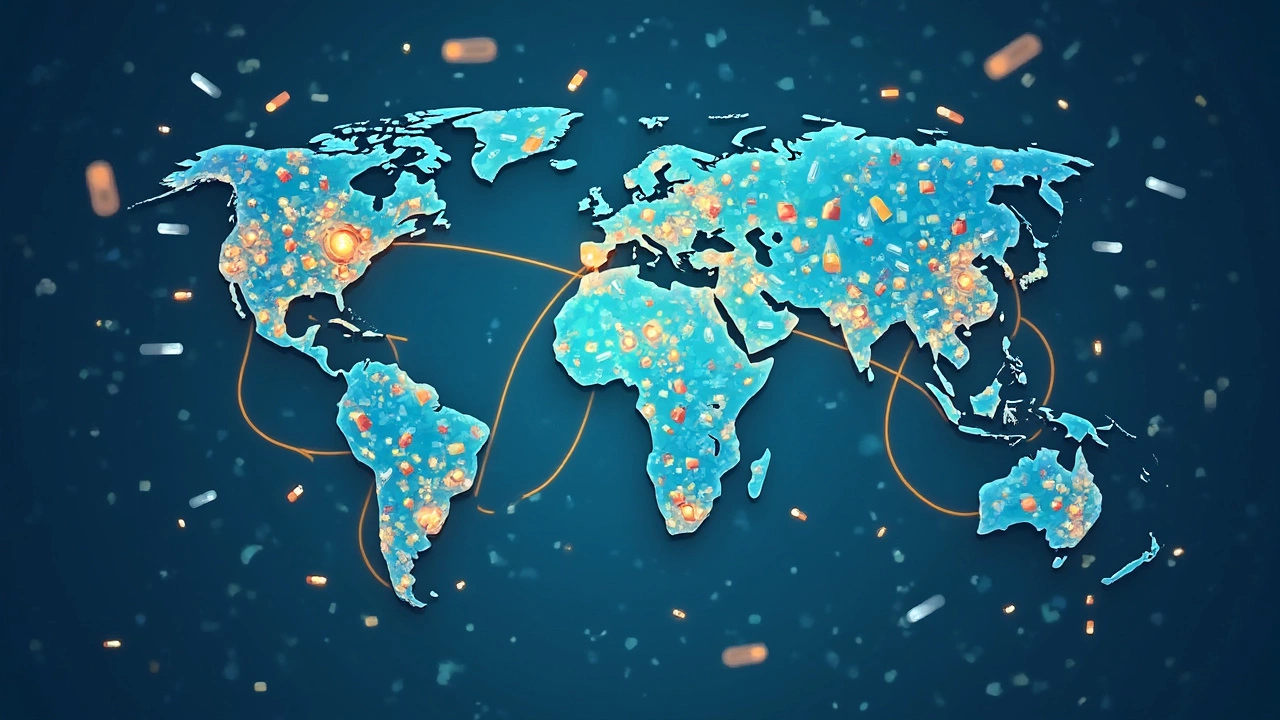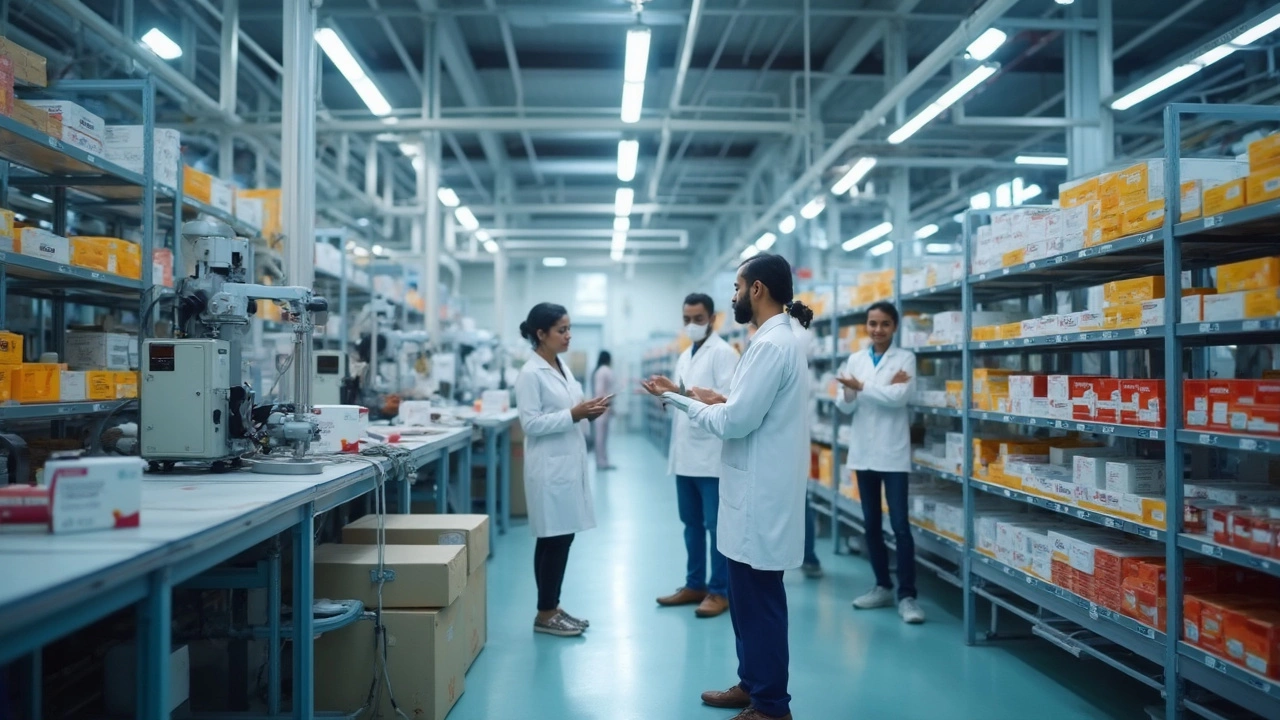Pop an antibiotic anywhere from South Africa to Canada and there’s a good chance it’s made by a company with “India” on the label. Walk into a pharmacy in the U.K., Australia, or even Brazil—behind the counter, those generic tablets you grab are probably a piece of India’s pharma empire. But how does this happen? How did a country once importing most of its medicines flip the script to become something like the world’s largest pharmacy?
Why India Became a Pharma Heavyweight
India ranks as the world’s third-largest producer of medicines by volume. That’s massive. It lands just behind China and the U.S. in the pharma manufacturing scene, but it pumps out about 20% of the global supply of generic drugs. Why did this happen? Go back to the 1970s. India made a gutsy move—it changed its patent laws to only recognize the process of making a drug, not the product itself. This meant Indian companies could reverse-engineer “Western” drugs, make their own versions, and sell them cheaply, legally, both locally and overseas. That’s how India started building a monster-sized generic drug industry.
Today, more than 60,000 generic brands exist across 60 therapeutic categories, from antibiotics to cancer medication. The country has over 3,000 pharma companies and more than 10,000 manufacturing plants. Walk around Hyderabad, Pune, or Ahmedabad, and you’ll find pharma factories stretching for miles. And it’s not just the numbers: India’s pharma sector has successfully supplied drugs for massive health emergencies too—like producing HIV/AIDS treatments at rock-bottom costs, helping millions.
Ever heard of the term “pharmacy of the world”? That’s not PR spin. According to the Indian Pharmaceutical Alliance, India supplies almost 40% of generic demand in the US and about 25% of all medicines to the UK. The scale is bonkers. In dollar terms, Indian pharma exports hit $25.4 billion in 2024, with top destinations being the U.S., Africa, the EU, and Latin America.
Inside the Numbers: Exports, Scale, and Reach
Let’s get specific. What really puts India on the world map isn’t just how many pills it makes, but how widely they’re shipped. In 2024-25, India exported pharmaceuticals to over 200 countries. The U.S. alone imported more than $7 billion worth of Indian medicines last year. Even Japan, super-picky about quality and safety, takes in Indian generics now. The country has more than 650 FDA-approved manufacturing plants outside the U.S.—the highest for any nation outside America. That’s a fact.
It’s not just Western markets, either. Africa gets about 60% of its medicines from India. When Nigeria, Kenya, and Uganda face outbreaks—malaria, TB, you name it—India’s pharma industry ramps up. UNICEF and WHO source many essential drugs from Indian suppliers for their global campaigns. Even COVID vaccines—remember Covishield and Covaxin? India pumped out shot after shot, not just for its 1.4 billion people, but also sent millions to Southeast Asia, Africa, and Latin America. That’s serious “soft power” in action.
India’s ability to make high-quality, low-cost medicines has made it a preferred partner for global health programs. The Clinton Health Access Initiative estimated in 2023 that access to cheap, Indian-made antiretrovirals (for HIV/AIDS) allowed global health groups to treat 10 times more patients than they could’ve otherwise. Even for rare diseases, Indian companies are muscling in, making complex treatments for much less—think biosimilars and advanced cancer drugs.

The Secret Sauce: What Powers Indian Pharma?
How does the Indian pharma machine keep humming? Simple answer: low-cost skilled labor, strong chemistry and engineering education, and a hyper-competitive market that pushes every company to innovate cheaper and faster. The country produces about 1.5 million science graduates each year—imagine that talent pool. On top of that, India’s pharma hubs, especially around cities like Hyderabad, Mumbai, and Bengaluru, act like mini Silicon Valleys for medicine.
Here’s something few realize: Indian companies are manufacturing not just the finished pills, but also a huge chunk of global Active Pharmaceutical Ingredients (APIs)—the raw stuff that makes medicines work. Between 25% to 30% of APIs globally come either directly from India or are made by Indian companies abroad. The big players? Sun Pharma, Cipla, Dr. Reddy’s, Lupin, and Aurobindo Pharma, just to name a few. These names dominate both home turf and exports. Sun Pharma, for example, is the fourth-largest specialty generics drug company in the world.
Plus, India’s cost advantage is tough to beat. Production costs here are a fraction of what they are in Europe or the U.S.—some estimates place manufacturing costs 40-50% lower than Western firms. But it’s not just about cheap labor. A hyper-competitive market means companies must be nimble: creating cost-effective processes, navigating tough regulations, and dealing with price controls. It’s real-life boot camp for business.
Don’t forget the Indian government’s push either. Schemes like “Production Linked Incentive” (PLI) have thrown billions of rupees into making more APIs domestically—so India isn’t just dependent on raw materials from China or elsewhere. With Make in India, the doors are wide open for R&D, tech upgrades, and new-age production plants.
Speed Bumps: What Challenges Does Indian Pharma Face?
Things aren’t all smooth sailing. In recent years, India’s pharma industry has faced a bunch of challenges that threaten its juggernaut status. The biggest? Quality concerns. The U.S. FDA, European regulators, and even homegrown agencies have flagged issues in some factories—like cleanliness problems or incorrect labeling. In 2024 alone, around 50 Indian manufacturing sites faced warning letters from the U.S. FDA. It’s a reminder that with great scale comes great scrutiny.
Another issue: over-reliance on imports of key raw materials, especially APIs, from China. Think about it: if something disrupts that supply chain (like COVID lockdowns or diplomatic spats), Indian manufacturers can find themselves scrambling. The government is pushing hard for India-made APIs—there’s funding and tax cuts—but it’ll take years to match China’s scale in this area.
Then there’s pricing pressure. As governments and insurers worldwide push to make health care cheaper, they wring down prices for generic drugs. That eats into profits and makes Indian companies search for new, more lucrative niches—think complex generics, biosimilars (drugs that mimic advanced biotech medicines), and original research. The R&D budget in India has more than doubled since 2017, but it still lags far behind giants like Pfizer or Novartis. Only a handful of Indian firms (like Biocon, Sun, and Dr. Reddy’s) have made serious global breakthroughs in new drug research. Most are still remixing and refining existing molecules.
Finally, old-school paperwork and bureaucracy slow things down. Even as the country goes digital, getting new drugs approved or exported sometimes takes ages compared to rivals. Plus, intense competition at home pushes companies into fierce discounting wars, which can hurt long-term investments in quality and research.

The Indian Pharma Playbook: Tips and What’s Next
So, want to ride the Indian pharma wave? If you’re an entrepreneur, investor, or just curious—here’s what the playbook looks like today:
- India pharmaceutical industry is dominated by generics, but the smart money is slowly shifting toward higher-value drugs: biosimilars, injectables, and specialty medicines.
- If you’re thinking exports, the U.S. and Africa are still where the big volumes are, but Latin America and Southeast Asia are getting more important by the year.
- Watch how Indian companies are investing in “green chemistry” and digital manufacturing to meet tougher global standards—and to save costs.
- Big pharma firms in India are beefing up R&D, often snapping up foreign research outfits or partnering with Western universities. If you want to jump careers, this is where the future action is.
- Quality matters more than ever. The next decade will likely see an “upgrade war”—companies competing on not just price, but quality, speed to market, and new drug launches.
- Government incentives for making APIs and critical drugs in India are only growing. Expect new manufacturing hubs to pop up in what are now smaller cities—think Vizag, Baddi, and Sikkim.
- If you’re looking for deals, pharma startups specializing in AI-driven drug discovery or remote diagnostics are the new cool kids in town.
India’s role on the pharma stage isn’t shrinking anytime soon. There’s a new generation of Indian scientists and entrepreneurs blending science, hustle, and global smarts—and you can bet the next big breakthrough might just come with a Made in India stamp.
